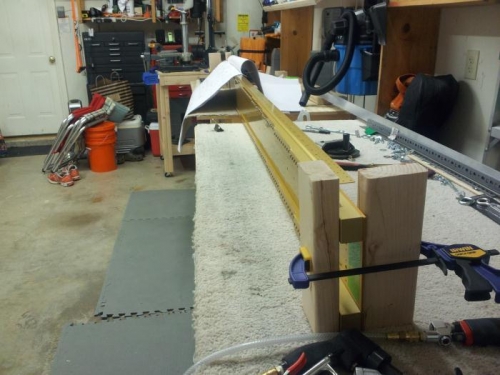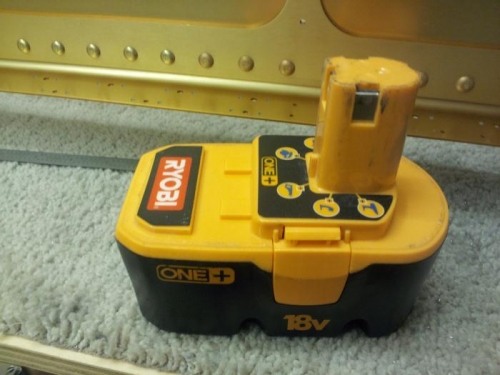
|

|
|

|
Jims RV-8

|
Date: 5-1-2013
|
Number of Hours: 1.00
|
Manual Reference: 7-2
|
Brief Description: Start the Main Spar
|

|
Tonight I final drilled the fuel tank platenut attach holes to size #40. It went fairly fast… I also set up the countersinking bit and started to CS the attach holes. “They” say that the best results for countersinking are had when you use a slower turning drill, like a battery powered drill, instead of the high speed air drill. Supposedly, there is no chatter when use a slower turning drill. I tried it and it seems to be true – I liked the results I saw under my 5X glasses. I first dialed my CS in on some spare aluminum…then made my first cuts on the spar and made the final adjustments so that the test rivet was sitting just flush with the spar. I noticed the drill was slowing so I threw it back on the charger for a short bit… and then I noticed it was no longer holding a charge…the old battery had gone belly up. I continued until it was just going too slow, and I finished 20 pairs before quitting for the night.
With 4 test rivets, I used the leap-frog method of testing the depth… I would countersink 4 holes, then leapfrog the last rivets up to fill in the latest holes…if those looked good, I moved on to 4 more holes. For some reason, about 1 in 10 holes would not be deep enough and I would have to re-drill? Nothing big, the rivet would be just slightly up (aka, proud) and I would give it another hit and it would be fine. For that reason I made sure I tested all of the holes I drilled and didn’t just assume that the CS depth was set and move on to drill all of the holes.
|

|

spar in home made jig
|

|

dead battery
|

|
|

|

|

|
|

|

|
Copyright © 2001-2024 Matronics. All Rights Reserved.
|

